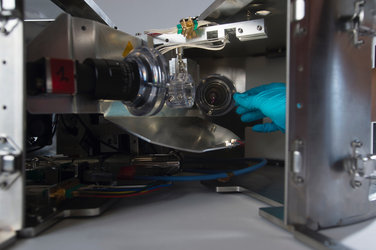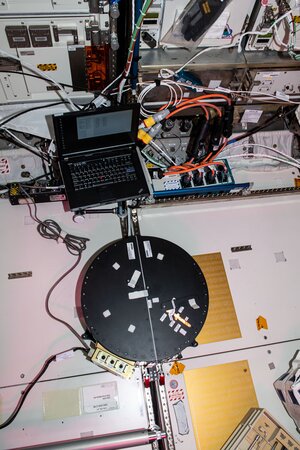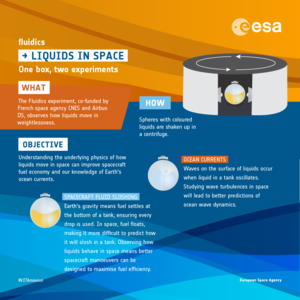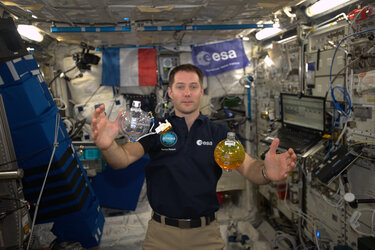
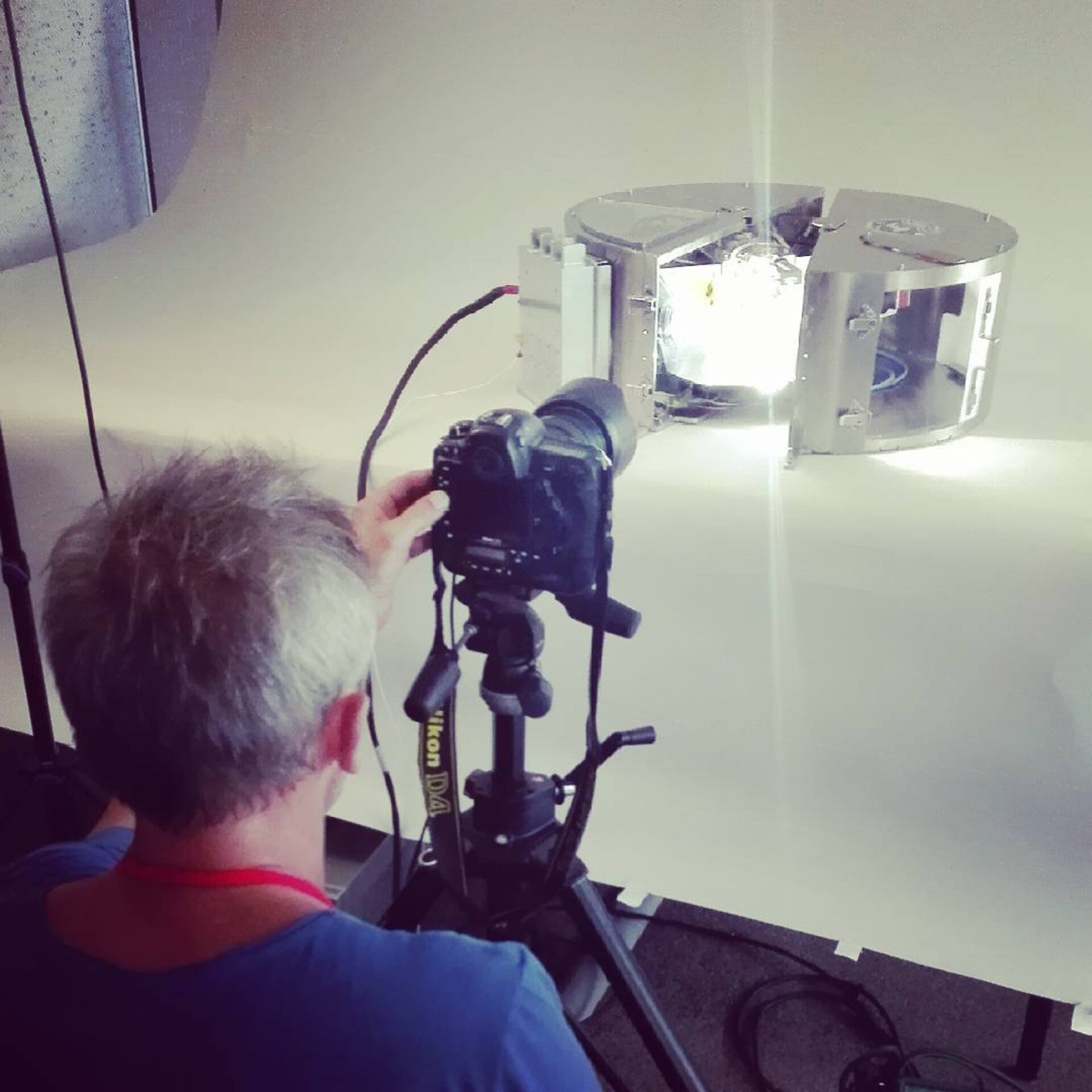
Fluidics hardware photo shoot
Photoshoot of Fluidics hardware before launch to the International Space Station.
How liquids behave on Earth is hard to predict and even harder in space without gravity. Getting the last drop out of a packet of orange juice can be a frustrating experience – imagine engineers designing satellites to use every drop of fuel in weightlessness or designing rockets with fuel tanks that must deliver the fuel to the engines under extreme loads.
The Fluidics experiment is looking at a phenomenon called ‘sloshing’ or how liquids move inside closed spaced. The goal is to help industry design better satellite fuel systems to increase their life and make them lighter
A second part of the experiment will be looking at surface turbulence in liquids. On Earth gravity and surface tension influence how a force dissipates in waves or ripples. By conducting Fluidics in space scientists can observe how surface forces behave without gravity simplifying the understanding of the phenomenon.
The experiment consists of three small transparent spheres with a centrifuge to move the liquids inside. The first sphere for the wave turbulence experiment will hold distilled water, the other two spheres used for the sloshing experiments uses a special liquid developed with low viscosity and little surface tension.
Aside from gaining a better understanding of the movement of fluids this experiment could help us understand our oceans and on a larger scale our planet’s climate as a whole.

